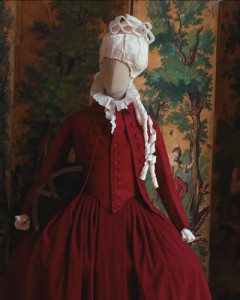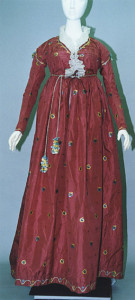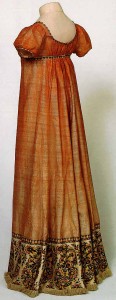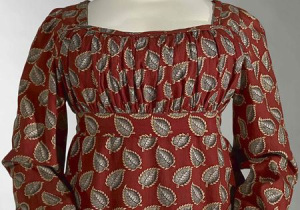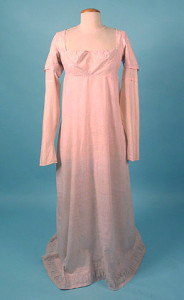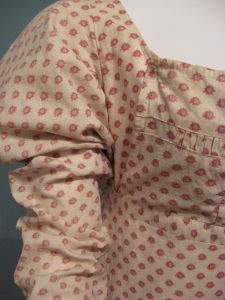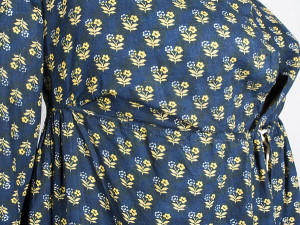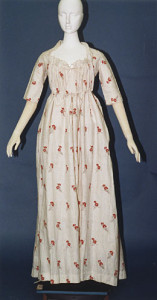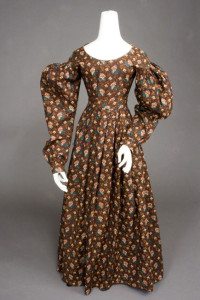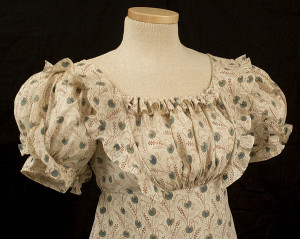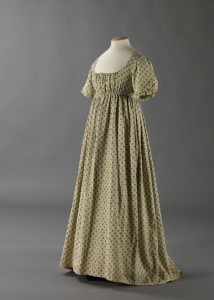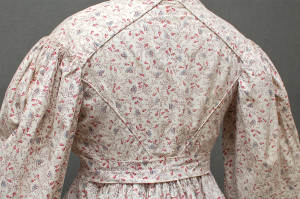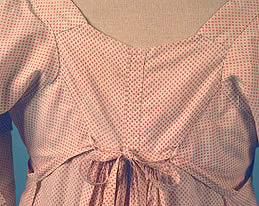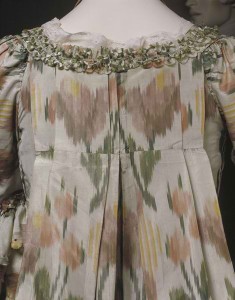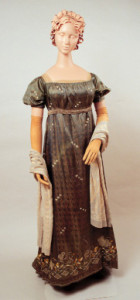
Puce silk c. 1805-1812
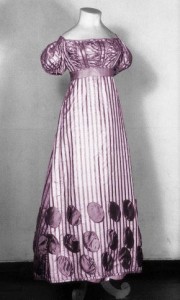
Purple silk c. 1820
For my first guest post here, I want to talk about the common impression that the Regency period was a sea of plain white gowns (another “inspired by Twitter” post from me). Yes, white was fashionable during the Regency, but it was hardly the only color worn. There was a big kick for all things ancient during the Regency, and as the statues from Rome and Greece had all lost their paint (yes, they weren’t plain white when they were new!) the period conception of the costumes of that period was white. So from the late 18th century into the early decades of the 19th, white ruled the fashionable set (not only was it all the rage, but because it was hard to keep clean, it functioned almost like an in-built sumptuary law: the poor could not ape you).

Red Muslin c. 1820-1825
But even during that period, white was not the only color worn (though I’d lay money it was the most common color worn when sitting for a portrait, which adds to the overemphasis it seems to have on our minds today). When you look at extant garments from the period, what appears is a sea of color: Puce, orange, silvery grey, red, yellow, blue, purple, pink, stripes and block-printed and roller-printed fabrics in all sorts of patterns and colors (with improved patterning and vibrancy by the 1820s).
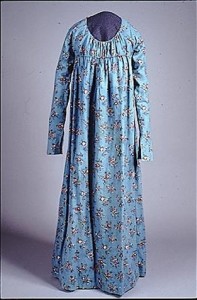
Blue Blockprint c. 1800
And while many of the examples look plain compared to the huge amounts of decorative passementarie used both before and afterward, if you look at the garments, they often have quite a few decorative elements (and would have often had more once accessorized in a period manner). If you look at the examples in Ackerman’s, you’ll see gowns of every color imaginable, and with enormous decorative variety: net overlays, lace, eyelash or fly trim, beading, spangles, tassels, Elizabethan collars/ruffs, elaborately pleated and tucked chemisettes, silk embroidery, chenille embroidery, and then we hit 1811-1815 and everything goes à la militaire or à la hussar and there’s just BRAID everywhere. By the time we get into the 1820s and the gowns have moved away from the flowing, Grecian lines into belled skirts and natural waists, the ornamentation goes wild. There are stuffed hems, and ribbon embroidery, and chenille ball trim, and rows and rows of big honking decorative stuff all around the hems.

Yellow Muslin c. 1810
I highly recommend Fashions in the Era of Jane Austen (it’s fashion plates from Ackermann’s c. 1809-1820) to anyone who wants to see just how spoogy the gowns can be. Or you can find select examples (in all their colorful glory) on Candice Hern’s site.
When you picture ball scenes when you’re reading, is it an all white scene, or a colorful swirl?

